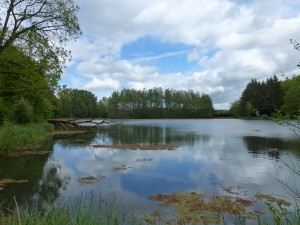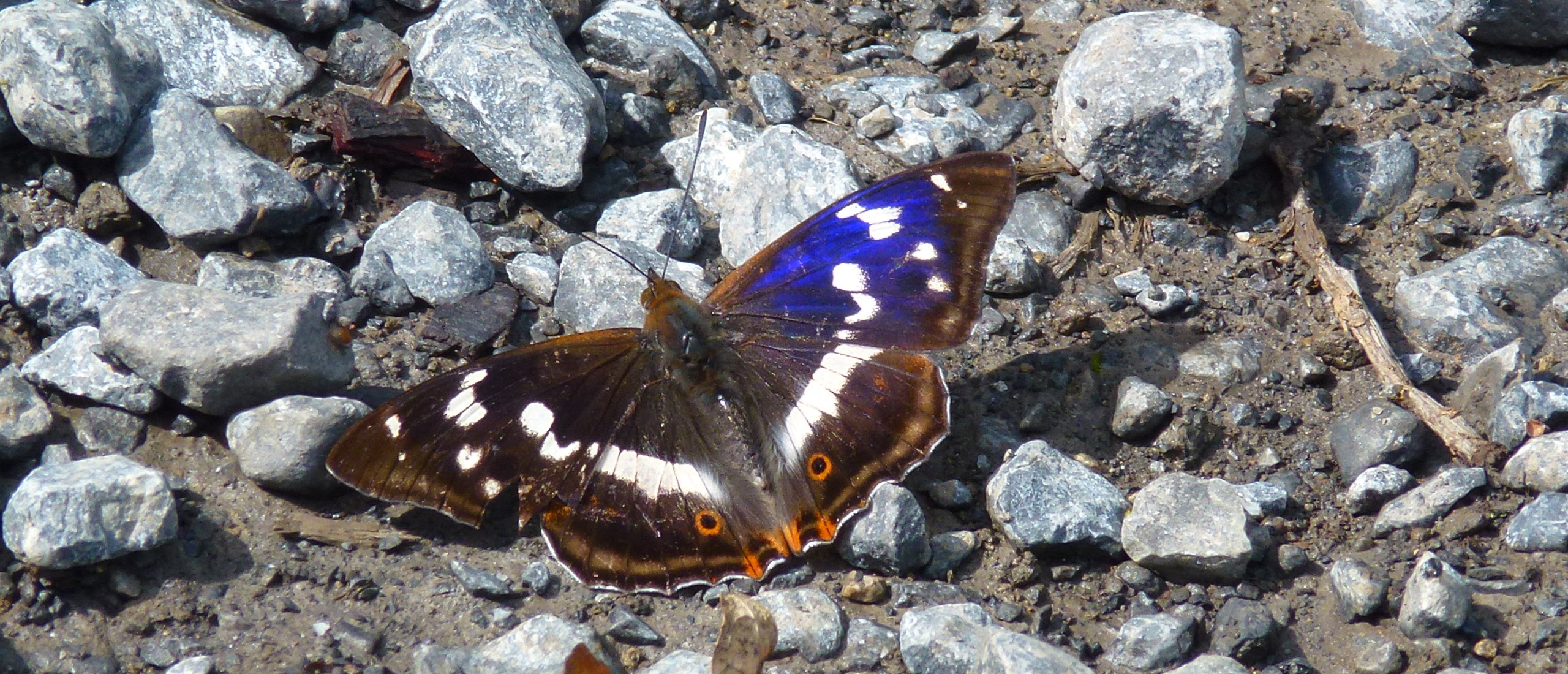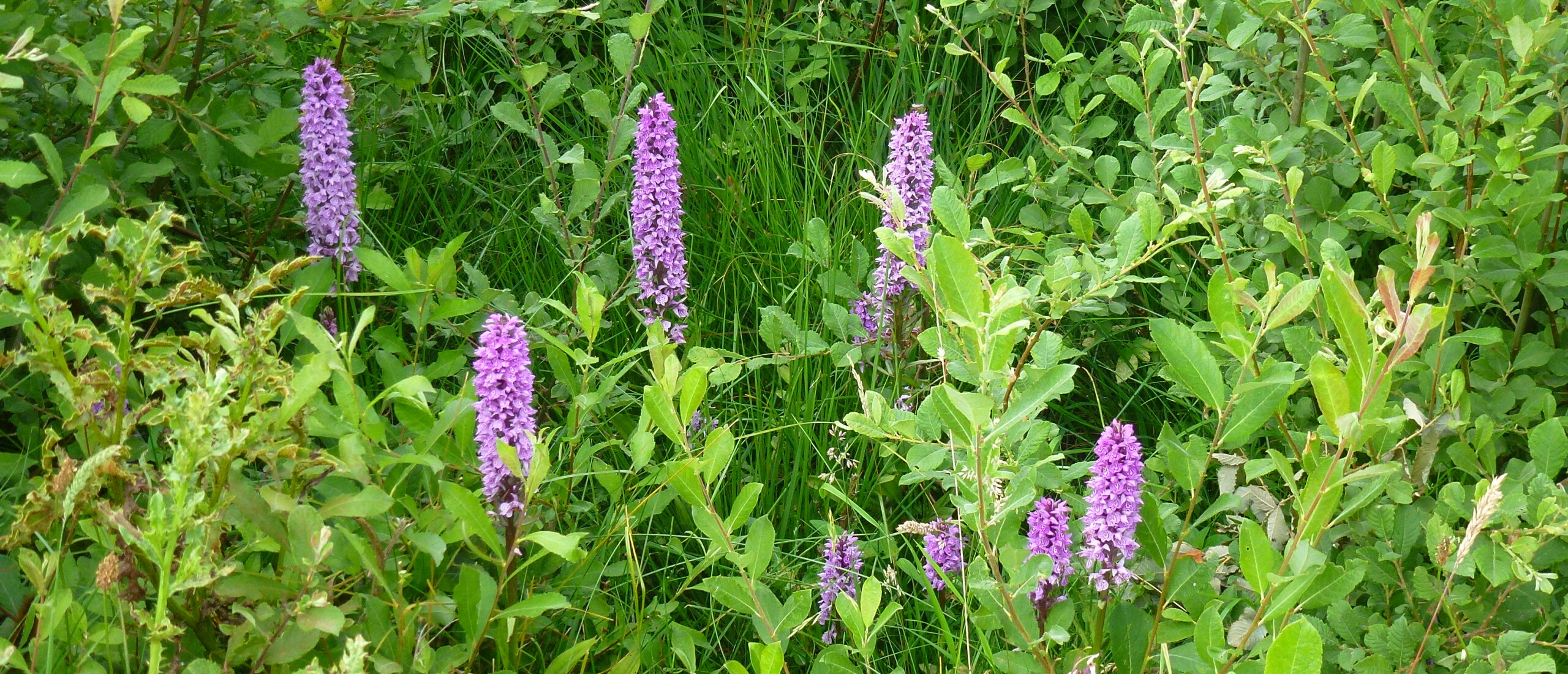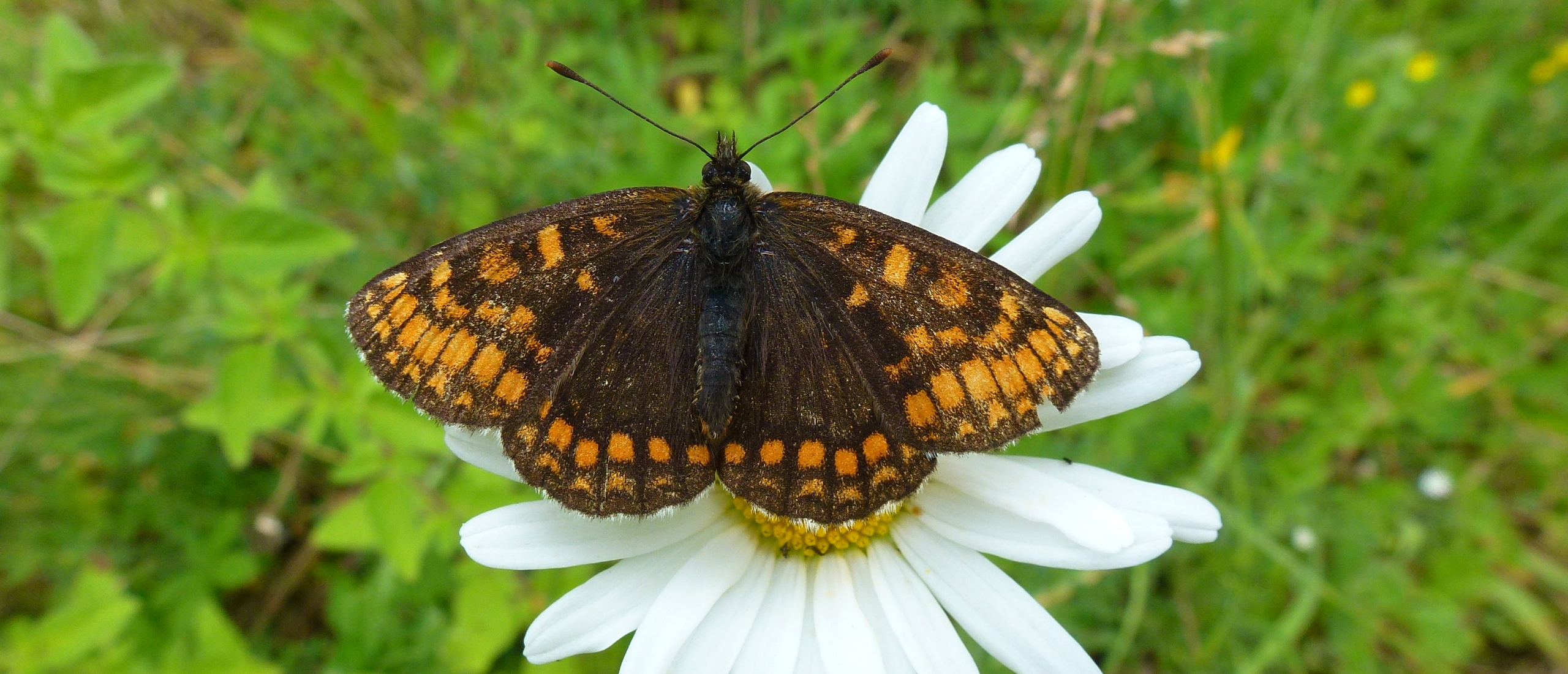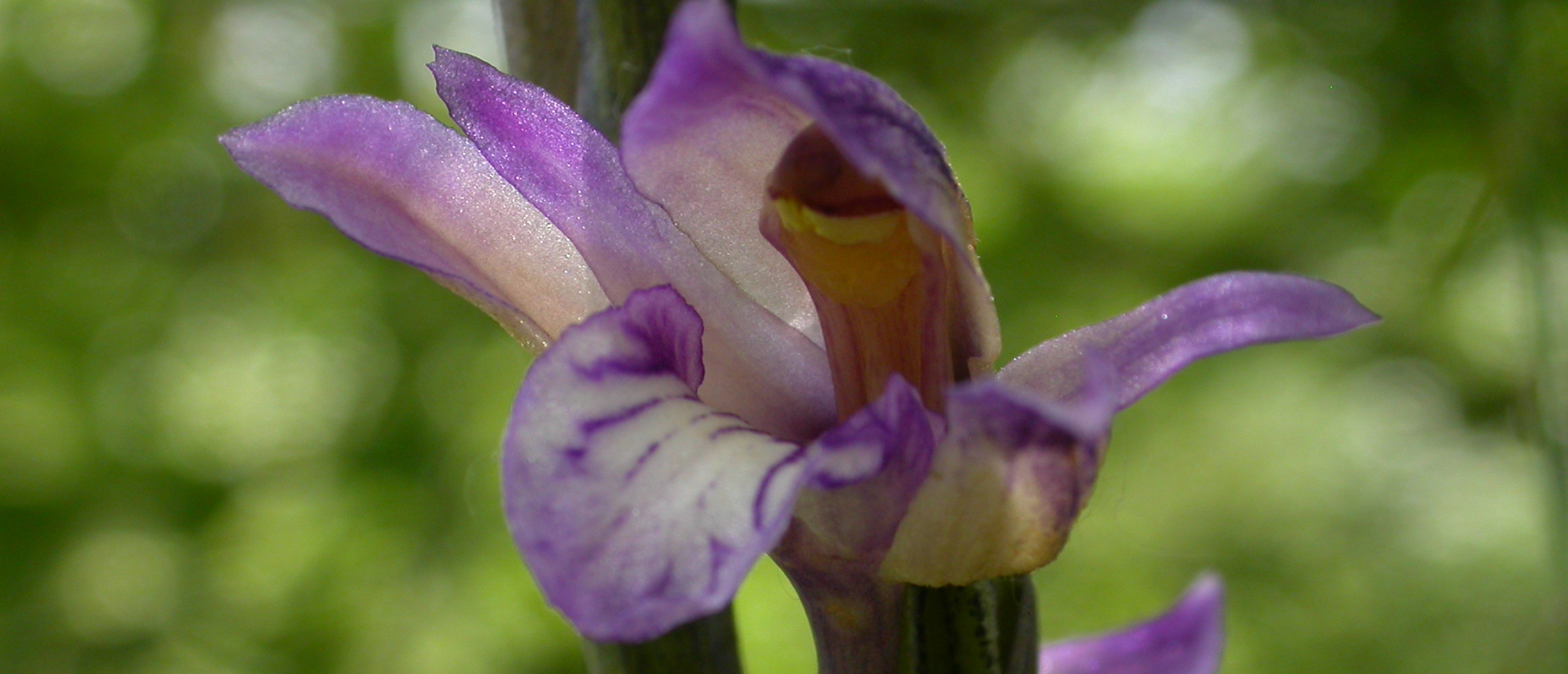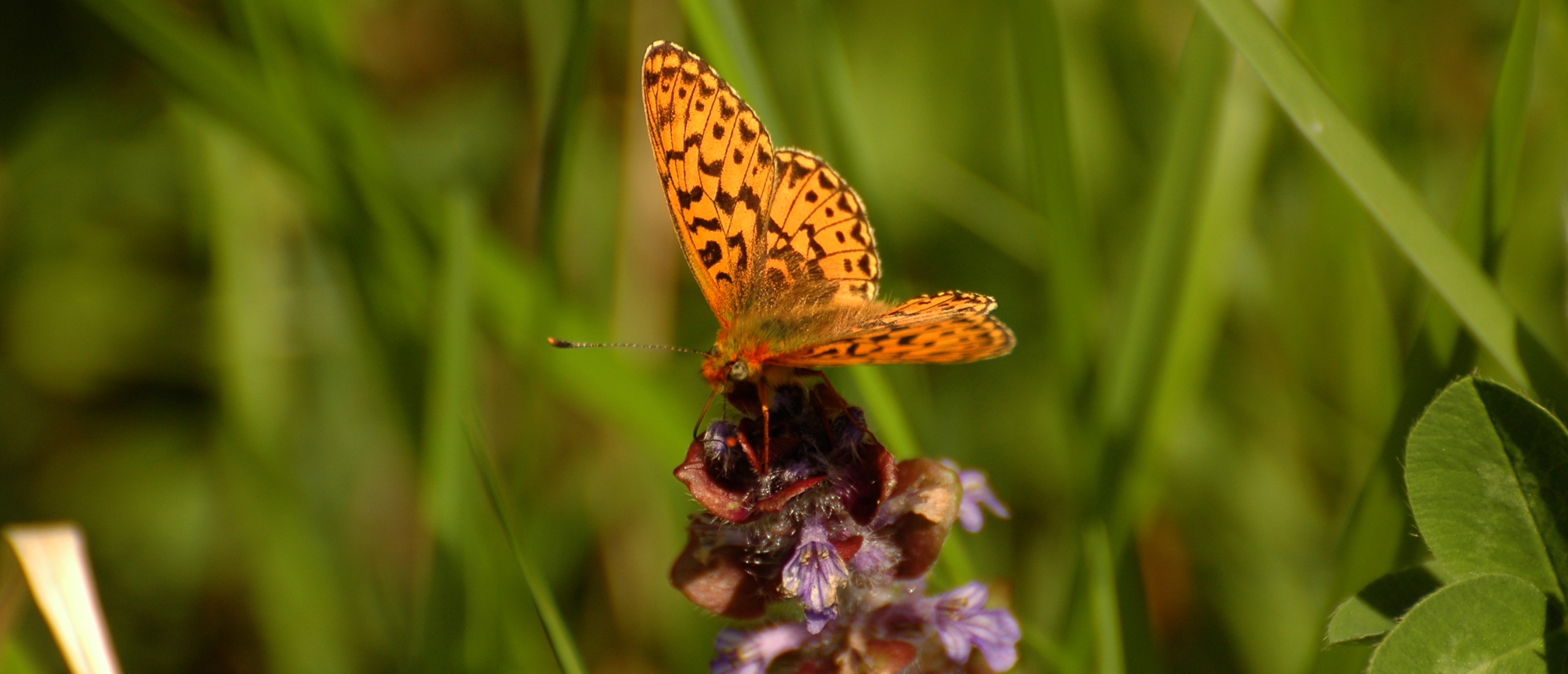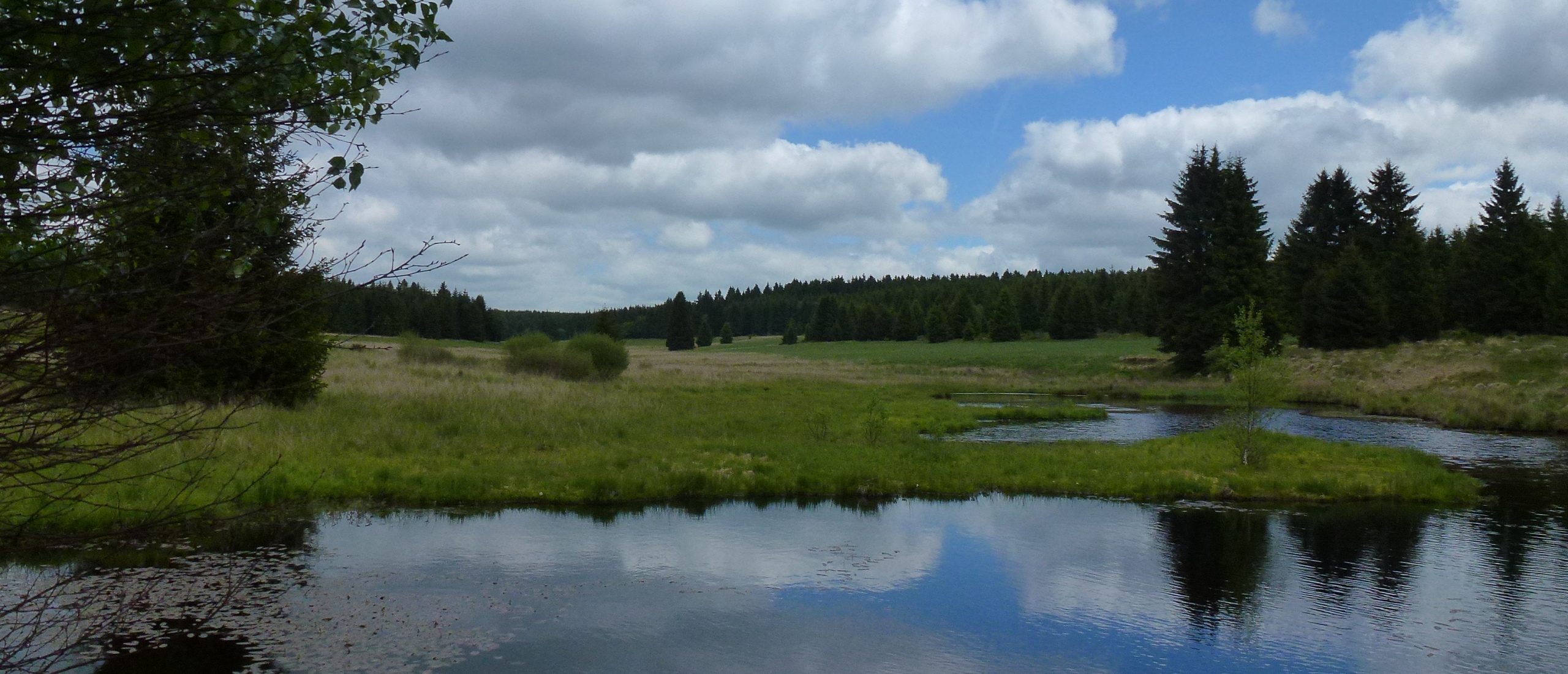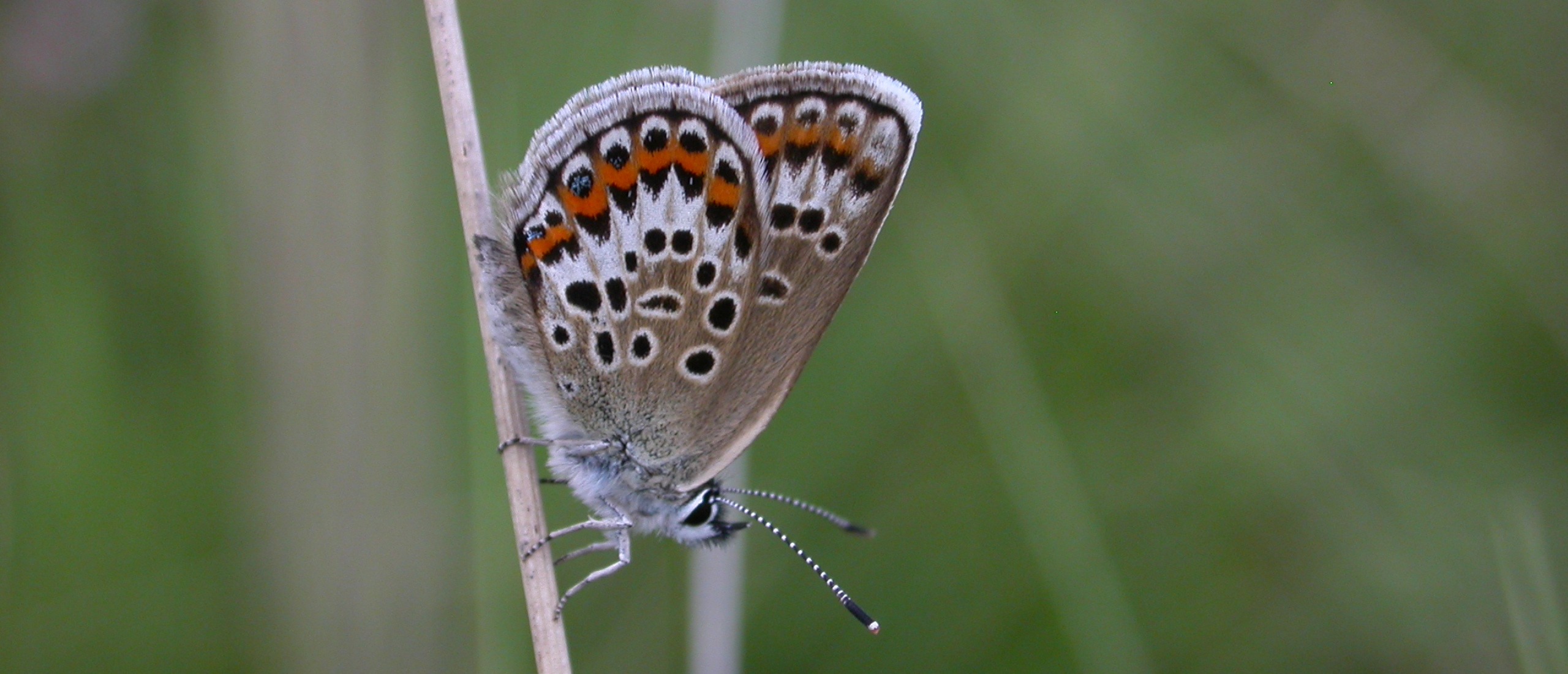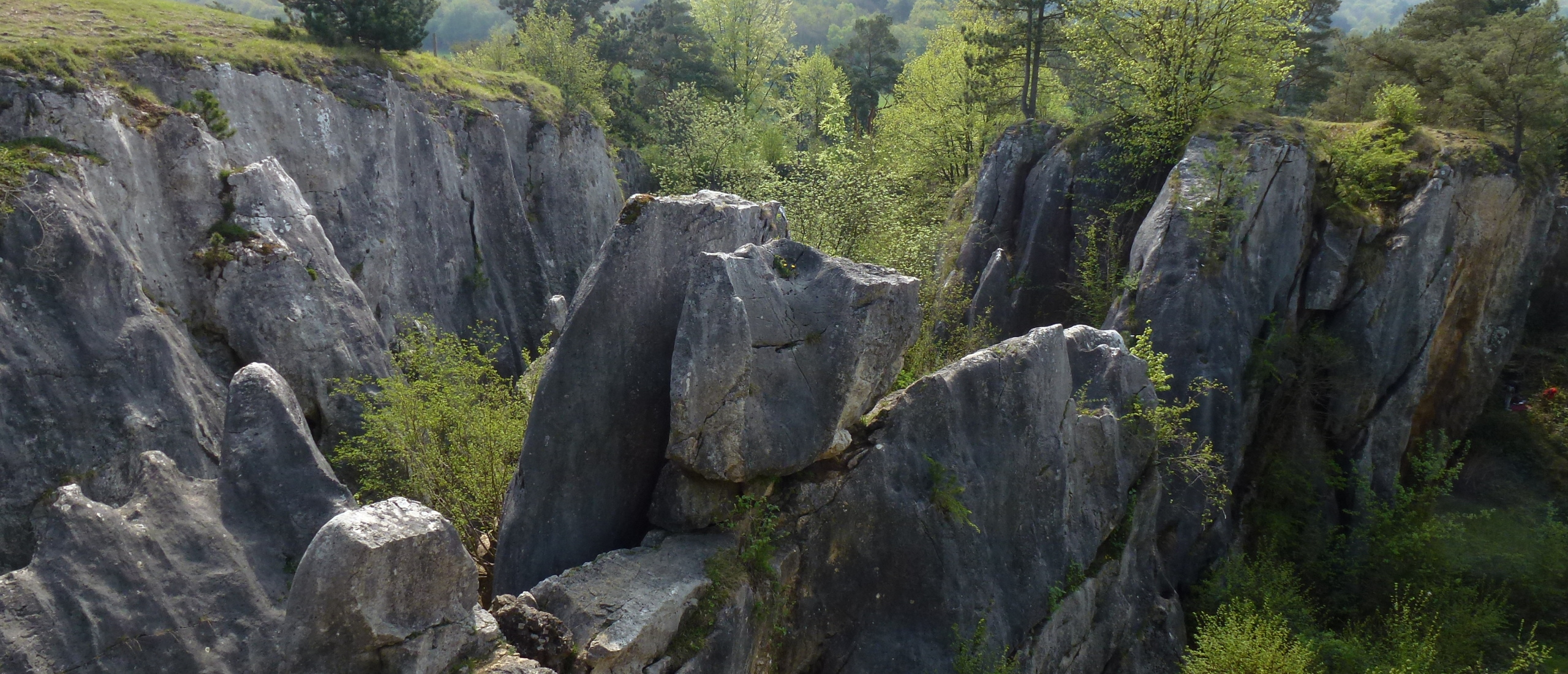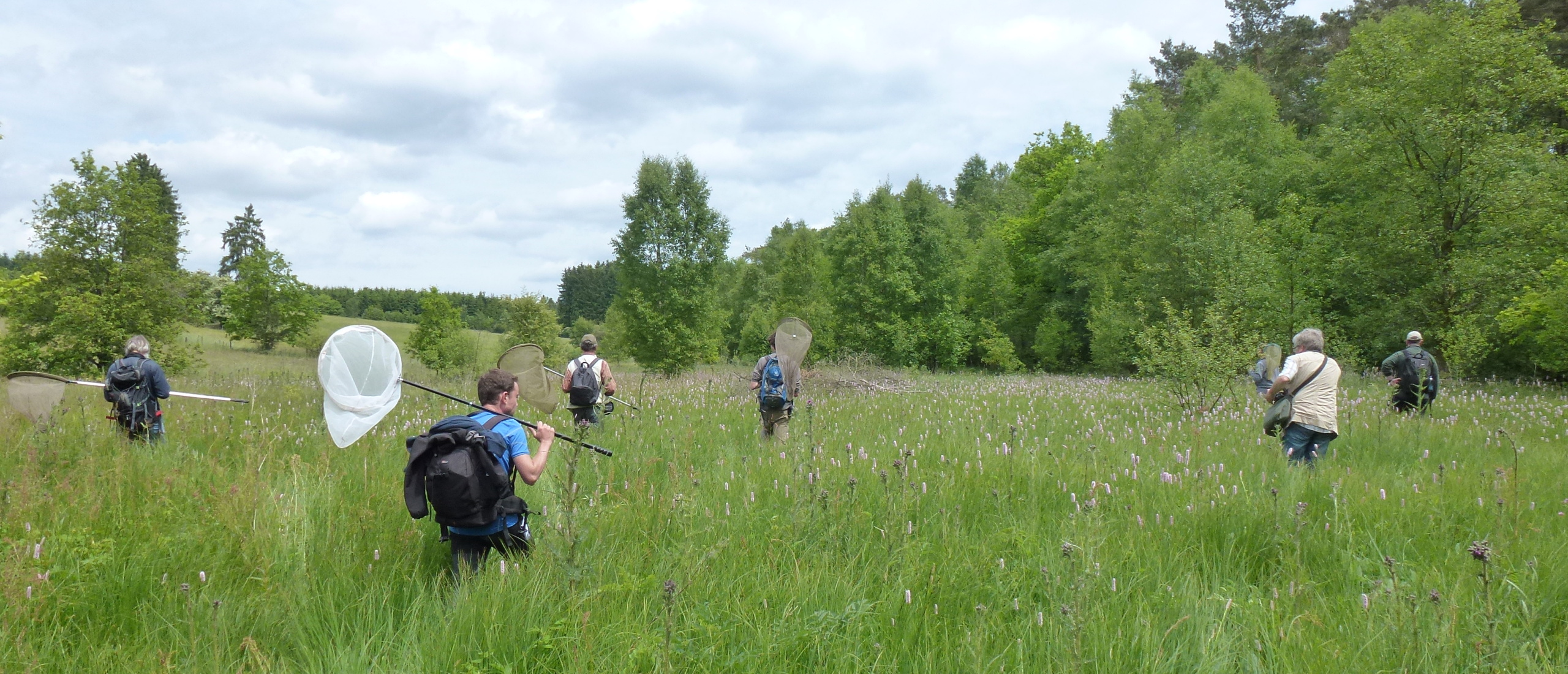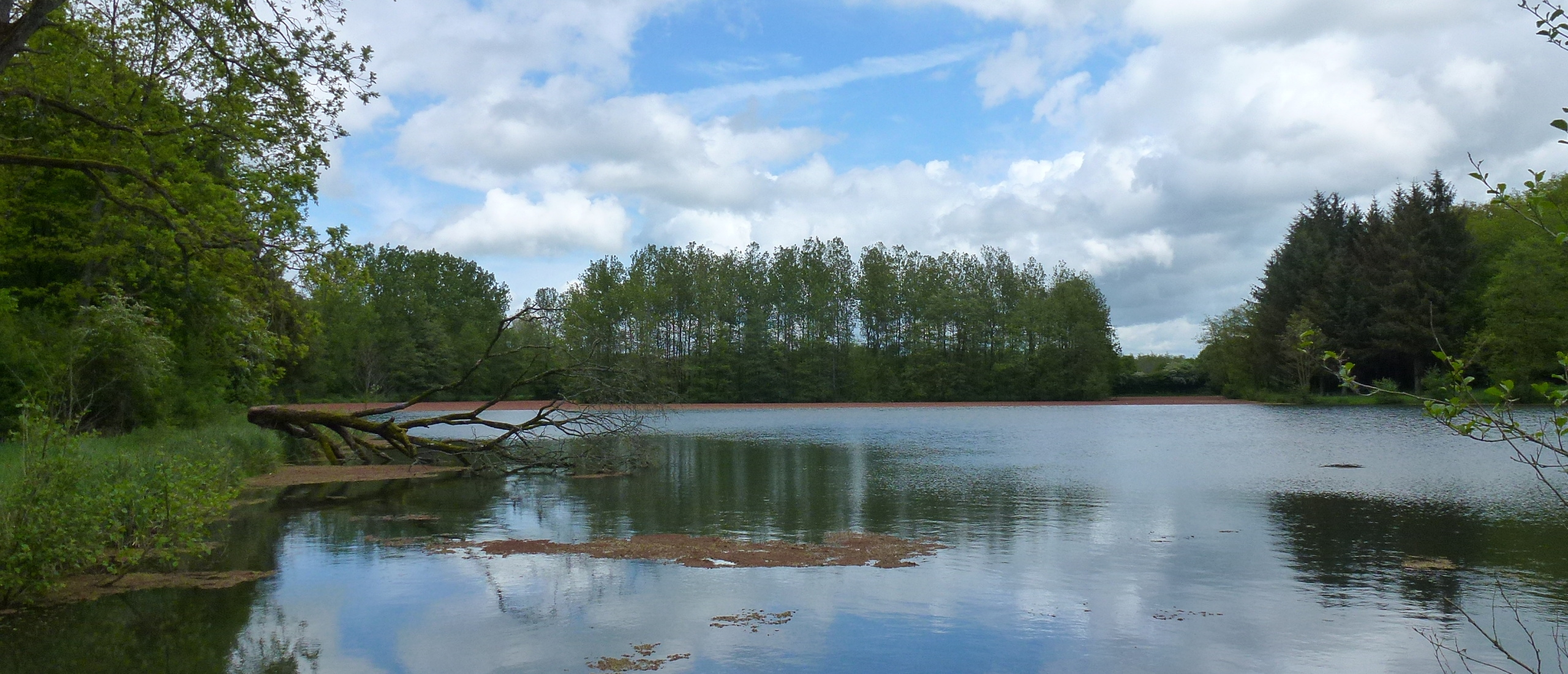
A weekend washout - almost! Following a week of sunny but chilly and very windy weather in the Netherlands, during which I did not manage to add any butterflies other than a single Map, Araschnia levana, in Flevoland, and a male Wall, Lasiommata megera, at De Groene Jonker, a flooded area of what the Dutch refer to as "Nieuwe Natuur", former farmland that has been returned to nature, I ventured southwards to my usual weekend butterfly haunts in northern France, full of hopes. However, these were soon to be dashed due to torrential rain, cold wind and lack of sunshine.
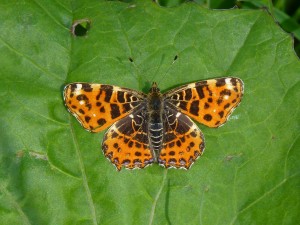 The spring form of the Map butterfly has an intricate pattern, hence its name
The spring form of the Map butterfly has an intricate pattern, hence its name
I did attempt to find some butterflies on Friday 9th May, but the inclement weather made for limited viewing. A managed to find two Wood Whites, Leptidea sinapis/reali, one Grizzled Skipper, Pyrgus malvae, and one Small Heath, Coenonympha pamphilus.
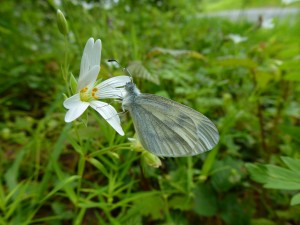 A lone Wood White braves the cold
A lone Wood White braves the cold
Saturday was a complete washout, and Sunday 11th May started off looking completely unpromising. However, around lunchtime there were a few brief gleams of sun, and I decided to give my favourite forest track a try, and in spite of the gusting wind and occasional torrential showers, to my surprise I managed to locate a male Common Blue, Polyommatus icarus, a few Grizzled Skippers, Pyrgus malvae, and at least four each of extremely freshly-emerged Small Pearl-bordered Fritillaries, Clossiana selene, and Marsh Fritillary, Euphydryas aurinia.
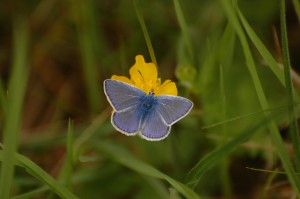 A male Common Blue nectaring to keep warm
A male Common Blue nectaring to keep warm
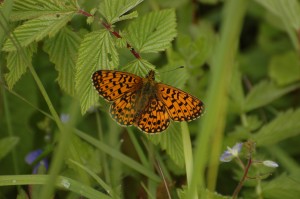 The Small Pearl-bordered Fritillaries were newly emerged
The Small Pearl-bordered Fritillaries were newly emerged
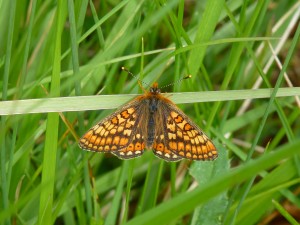 A Marsh Fritillary trying to warm up in the grass
A Marsh Fritillary trying to warm up in the grass
Pleased as I was to see these latter two species, the sight of the Small Pearl-bordered Fritillaries set a certain alarm bell ringing in my head - when the Small Pearl-bordereds are emerging, the Pearl-bordered Fritillaries, Clossiana euphrosyne, are usually going over...and I have not seen them yet this year. This is an illustration of just how difficult it is to combine going for the maximum butterfly list with work commitments. The butterflies' flight periods are so short, and as I can only be in their habitats on certain weekends, AND I am completely reliant on favourable weather on those few weekends, I can easily miss a given species for the entire year.
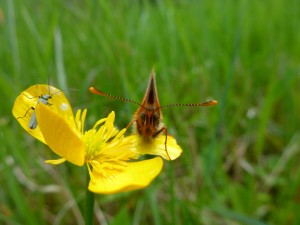 Marsh Fritillaries often roost on flowers
Marsh Fritillaries often roost on flowers
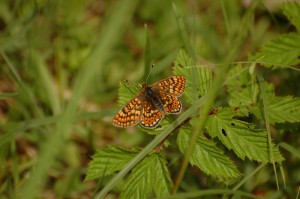 Marsh Fritillaries often bask for long periods, making them excellent subjects for photography
Marsh Fritillaries often bask for long periods, making them excellent subjects for photography
Pleased nonetheless with my success with the butterflies, I decided to try my luck with a rare and even more difficult dragonfly, the Eurasian Basket-tail, Epitheca bimaculata. This elusive species is only known in this area from one lake, and unlike the butterflies, which may be viewable for perhaps a month or so, to find this one you really have to time your visit for a particular few days when the nymphs are climbing out of the water, ascending the bankside vegetation, and the adults are emerging. During this incredibly brief window, if you time your visit precisely correctly, you can be treated to the sight of numerous individuals drying themselves and preparing for their first flight...and such was to be my fortune this afternoon. It was not long before I spotted my first dragonfly drying itself among the rushes along the shore, but this turned out to be a Downy Emerald, Cordulia aenea, of which I went on to see several more. But shortly afterwards, my eyes settled upon a considerably larger insect, this time with the characteristic black markings at the base of the hindwings (hence the species' scientific name, bimaculata; the Dutch name is Tweevlek, or Two-Spot).
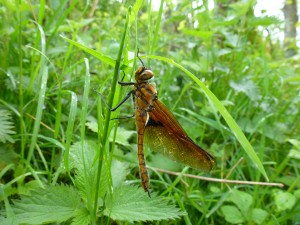 A Eurasian Basket-tail drying itself before its first flight
A Eurasian Basket-tail drying itself before its first flight
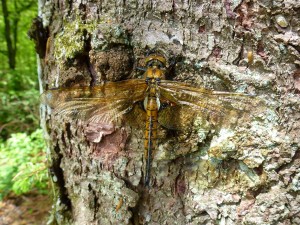 A Eurasian Basket-tail shortly before its first flight
A Eurasian Basket-tail shortly before its first flight
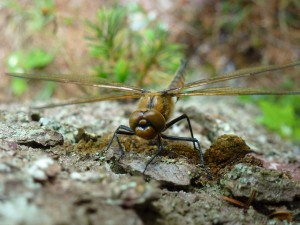 Dragonfly eyes are among the largest compared to the size of the head of any creature
Dragonfly eyes are among the largest compared to the size of the head of any creature
I found at least eight newly emerged Eurasian Basket-tails, but the weather was so cool and intermittently rainy that I only saw one actually fly away - a sight to savour, as they tower away from the lake on their first flight, and then apparently disappear. They must return to breed, but I am not sure when, and it is very rare to see them at any time other than this brief moment when they are easily viewable as they transform themselves from the fat-bodied, spiny nymphs that have spent their entire lives until this point under water into the gossamer-winged flying dragons that soar away over the trees, perhaps never to be seen again.
 Nettle patches seem to be popular spots for the dragonflies to dry their wings
Nettle patches seem to be popular spots for the dragonflies to dry their wings



